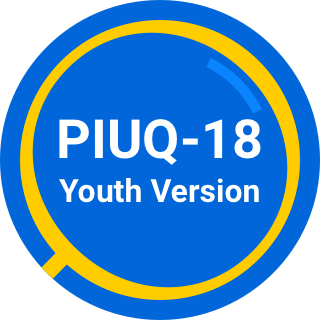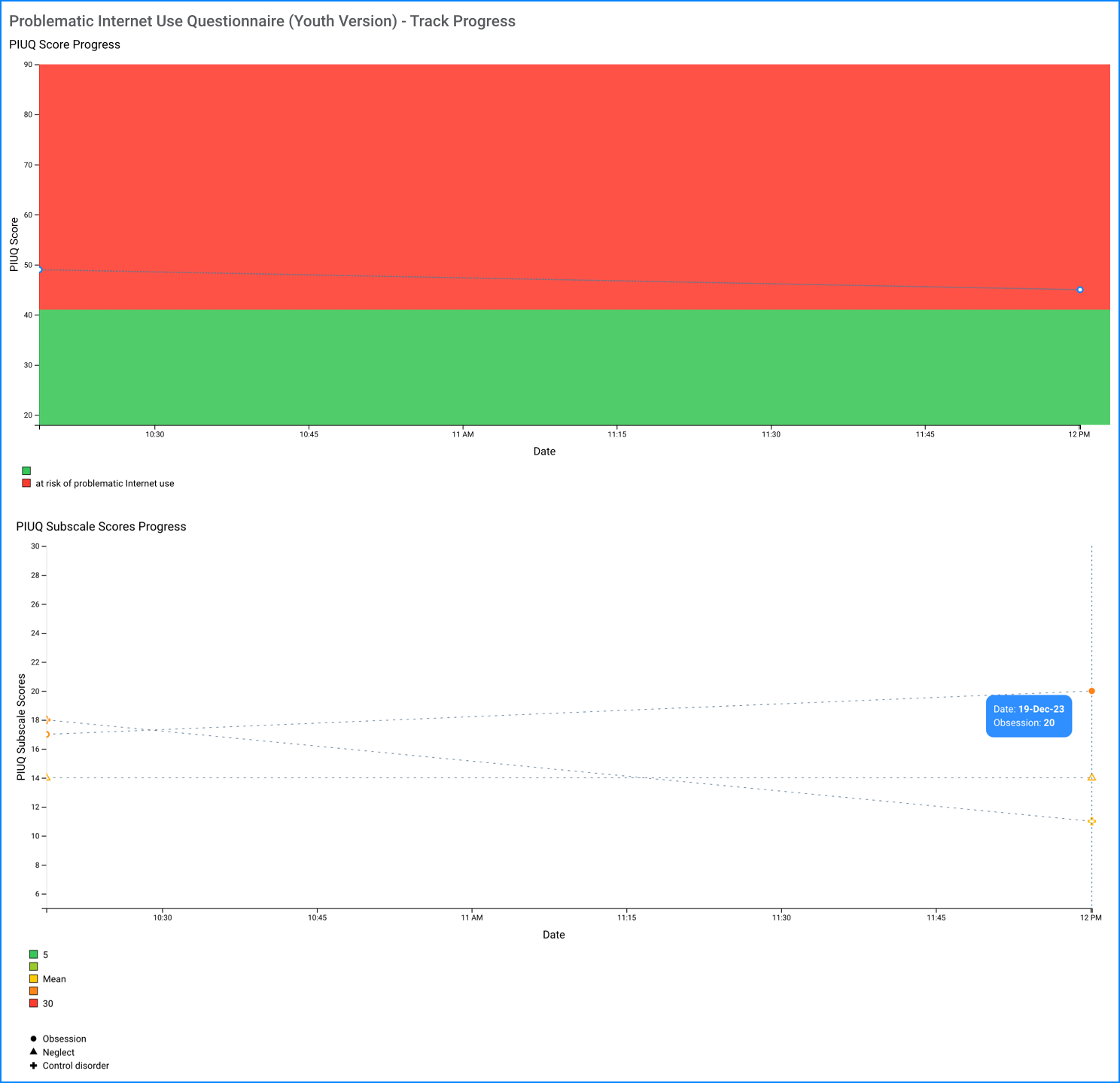Total score can be calculated by adding up all 18 items and it ranges from 18 to 90. If the total score equals or exceeds 41 points, the respondent can be considered to be at risk of problematic Internet use. Subscale scores can be calculated by adding up the items belonging to the respective subscale. Both the subscale scores and the total score can be used in their continuous forms as well.
Subscales
Obsession: Questions 1, 4, 7, 10, 13, 16
Neglect: Questions 2, 5, 8, 11, 14, 17
Control disorder: Questions 3, 6, 9, 12, 15, 18




